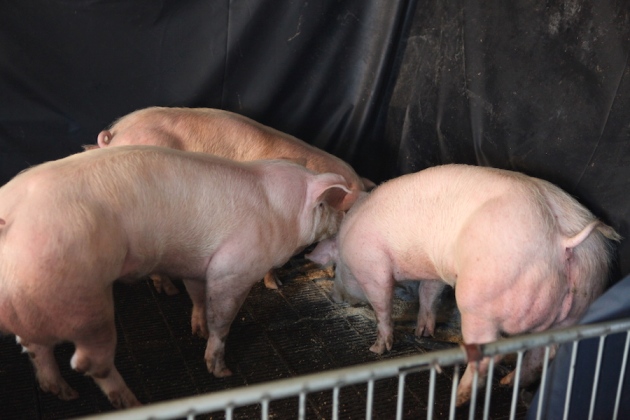Belgian Blue cattle are hulking animals that provide unusually large amounts of prized, lean cuts of beef, the result of decades of selective breeding. Now, a team of scientists from South Korea and China says that it has created the porcine equivalent using a much faster method.
Key to creating the double-muscled pigs is a mutation in the myostatin gene (MSTN). MSTN inhibits the growth of muscle cells, keeping muscle size in check. But in some cattle, dogs and humans, MSTN is disrupted and the muscle cells proliferate, creating an abnormal bulk of muscle fibres.
To introduce this mutation in pigs, Kim used a gene-editing technology called a TALEN, which consists of a DNA-cutting enzyme attached to a DNA-binding protein. The protein guides the cutting enzyme to a specific gene inside cells, in this case in MSTN, which it then cuts. The cell’s natural repair system stitches the DNA back together, but some base pairs are often deleted or added in the process, rendering the gene dysfunctional.
The team edited pig fetal cells. After selecting one edited cell in which TALEN had knocked out both copies of the MSTN gene, Kim’s collaborator Xi-jun Yin, an animal-cloning researcher at Yanbian University in Yanji, China, transferred it to an egg cell, and created 32 cloned piglets.
Kim and his team have not yet published their results. However, photographs of the pigs “show the typical phenotype” of double-muscled animals, says Heiner Niemann, a pioneer in the use of gene-editing tools in pigs who is at the Friedrich Loeffler Institute in Neustadt, Germany. In particular, he notes, they have the pronounced rear muscles that are typical of such animals.
Rather than trying to create meat from such pigs, Kim and Yin plan to use them to supply sperm that would be sold to farmers for breeding with normal pigs. The resulting offspring, with one disrupted MSTN gene and one normal one, would be healthier, albeit less muscly, they say; the team is now doing the same experiment with another, newer gene-editing technology called CRISPR/Cas9. Last September, researchers reported using a different method of gene editing to develop new breeds of double-muscled cows and double-muscled sheep.
Kim hopes to market the edited pig sperm to farmers in China, where demand for pork is on the rise. The regulatory climate there may favor his plan. China is investing heavily in gene editing and historically has a lax regulatory system, says Ishii. Regulators will be cautious, he says, but some might exempt genetic engineering that does not involve gene transfer from strict regulations. “I think China will go first,” says Kim.
SOURCE – Nature

Brian Wang is a Futurist Thought Leader and a popular Science blogger with 1 million readers per month. His blog Nextbigfuture.com is ranked #1 Science News Blog. It covers many disruptive technology and trends including Space, Robotics, Artificial Intelligence, Medicine, Anti-aging Biotechnology, and Nanotechnology.
Known for identifying cutting edge technologies, he is currently a Co-Founder of a startup and fundraiser for high potential early-stage companies. He is the Head of Research for Allocations for deep technology investments and an Angel Investor at Space Angels.
A frequent speaker at corporations, he has been a TEDx speaker, a Singularity University speaker and guest at numerous interviews for radio and podcasts. He is open to public speaking and advising engagements.


